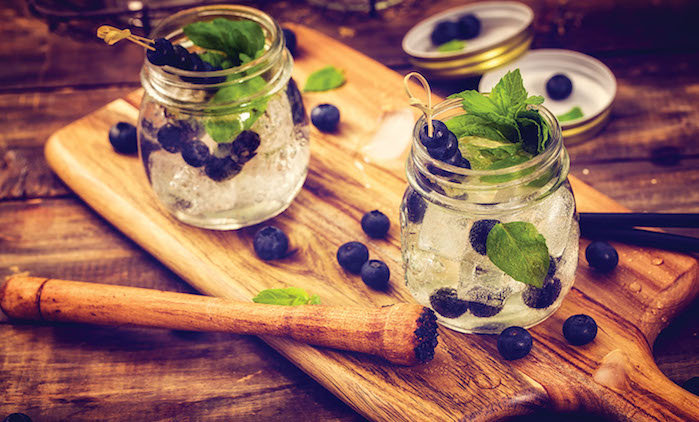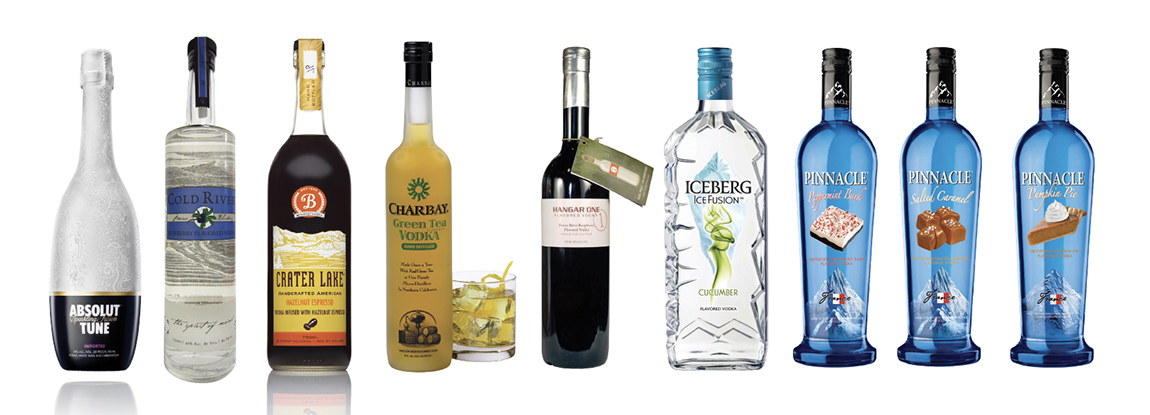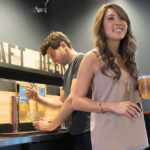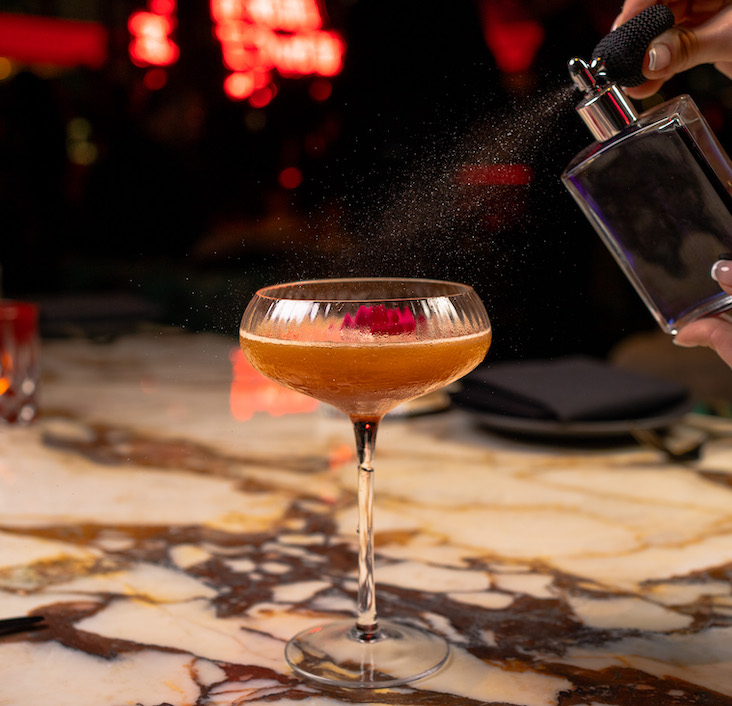One of the keys behind making exceptional cocktails is the concept of sessionability, a term used to describe a drink guests can enjoy throughout an evening without it becoming tiresome, overbearing or otherwise unsatisfactory. Ultimately it refers to a cocktail sufficiently engaging to keep guests interested in wanting another.
Creating a sessionable drink is more challenging than it may seem. Cocktails lacking character and dimension are a bore and guaranteed to send people packing. On the other hand, cocktails with excessive amounts of flavor will quickly overwhelm the palate and rankle the sensibilities like an accordion. Achieving balance between characteristics such as tart, sweet and savory is the primary mission and a mixologist’s stock and trade.
Not surprisingly, sessionability is a significant factor in developing a new and innovative spirit. A flavor erring in one extreme or the other is the so-called “kiss of death.”
Most people make a judgment regarding the flavor of a beverage within moments of first tasting it. In essence, the fate of a brand is often decided within moments of launching. How does a company best ensure that their product has the flavor it takes to win over the consumers’ collective palate in that moment of truth?
Anthony Pullen, educational and brand development manager for Lucas Bols, thinks succeeding at that moment is all about creating a balanced overall experience.
“Flavor is based on people’s experiences. We’ve all heard the saying that some exotic food tastes just like chicken. Our brains are hard-wired to relate the chemical reaction happening on our tongue to a past experience. Color and aroma play a huge role in this, and if you want to recreate a flavor that matches something that already exists, all of these factors have to be considered and matched.”
Mark Montgomery, CEO of Fishbowl Spirits, makers of Blue Chair Bay Rum, believes there are other contributors to winning the moment of truth. “There’s the visual and tactile experience of the bottle to consider—how it looks and how it feels in the hand. Then there are non-tangible cues that create value in the mind of the consumer. After that it’s all about the liquid. How enticing are the aromas when the cork is pulled? How does the liquid look when it’s poured? And then, yes, the consumers’ first impressions of the flavor set the tone for re-consumption.”
Keeping Flavors Fresh
One of the most notable of beverage trends is that vodka sales of both flavored and neutral are beginning to slow. According to the Beverage Information Group, the vodka category increased its sales to over 78.2 million, 9-liter cases sold in the U.S. in 2015, an increase of only 1.1% over last year (a far cry from the days of double-digit growth). Despite the drop in its share of the distilled spirits market—which decreased from 34 to 33.7%—vodka remains the powerhouse in the spirits world. That decrease still equates to one out of every three bottles of spirits sold in America.
Flavored vodkas continue to attract consumers and practitioners alike, especially those flavors that can’t easily be replicated at home, or on-premise. In addition to expanding in size and breadth of offerings, the flavored vodka segment is maturing in quality as well. Increasing numbers of artisanal, small batch vodkas, as well as those produced by large suppliers, are making their way into the American market. These new handcrafted brands sport sophisticated flavors perfectly in step with contemporary tastes.
Flavored vodkas are not without their detractors, who contend suppliers are filling the marketplace with youth-oriented flavors that lack pedigree and sophistication. Have vodka producers gone too far by introducing confectionary flavors? Do these vodkas contradict to the contemporary mixology trends?
Levi Walker, craft spirit specialist for Young’s Market Company in San Diego, says in this age of healthful lifestyles that dosing vodkas with artificial flavors has run its course.
“I think vodkas laced with natural flavors are what’s needed, such as lavender, rosemary or hops,” he says. “These are products I make for cocktails and they are delicious. But then again you have to ask the question, ‘what’s wrong with an adult wanting to enjoy a beverage that makes them feel like a kid again?’”
The Art of Flavor
Don’t let their simplicity fool you. Creating a genuinely remarkable flavored vodka is challenging and requires striking a delicate balance between man—technique, science and passion—and nature—water, grain and flavor. It’s far from a straightforward proposition. An artisanal flavored vodka is especially unforgiving. Any flaws or missteps are immediately apparent in the glass. Yet when done really well, flavored vodkas are sublime treats for the senses.
Americans have made flavored vodkas one of the most successful spirit segments in the beverage business. In the event you missed the initial fanfare surrounding their release, here is a scouting report on some of the best and brightest new flavors on the market:
Absolut Tune — One of the recent offerings from an early pioneers of flavored vodkas, Pernod Ricard’s Absolut Tune is a break from conventionality. It is a blend of Absolut Vodka (40%) and Sauvignon Blanc (60%) from the New Zealand’s Marlborough region. Fine carbonation is added before it’s bottled at 28 proof (14% alcohol by volume). The fusion is clear with a silky body, generous fruit-laced bouquet and a dry palate of white wine and dried fruit.
Cold River Blueberry — Made in Freeport, Maine, Cold River Vodka is a handcrafted, pot-distilled spirit made from locally grown potatoes, spring water and Maine blueberries. The vodka’s essential purity out of the still means that it requires only minimal filtering before bottling. The crystal clear vodka has a medium-weight, lushly textured body and a brilliant bouquet. The flawless finish is like the holy chorus of blueberries. It’s an 80-proof homage to nature.
Crater Lake Hazelnut Espresso — Made in Bend, Oregon, Bendistillery’s acclaimed Crater Lake Hazelnut Espresso Vodka is a small-batch spirit distilled from local grain and spring water from the Cascades. The vodka is aged in oak barrels and filtered 10 times through lava and charcoal before being infused with hazelnut espresso beans and a small amount of brown sugar. The vodka has the look and enticing aroma of freshly brewed coffee with light nutty notes.
Domaine Charbay Green Tea — This artisanal vodka is handcrafted once a year in Napa Valley from Midwestern grain and spring water. It is then infused in Zen-like harmony with four varieties of first growth green teas, each of which is selected for its individual flavor and aroma. The 70-proof vodka has a light amber hue and appealing floral and herbal notes. Its lingering finish is imbued with the flavor of freshly brewed green tea. It’s a delightfully understated spirit.
Hangar One Fraser River Raspberry — This seasonal offering is produced each June from Washington State raspberries. The freshly picked berries are macerated in vodka, after which it is redistilled in the alembic still. Before bottling, raspberry juice is added for complexity and a touch of natural sweetness and color. The Proximo Spirits vodka has the focused aromas of sun-drenched raspberries warming on the vine. Its palate is a lavish array of long-lasting, delightfully dry, true-to-fruit flavor.
High Spirits Prickly Pear — Flagstaff’s High Spirits Distillery sits at the base of the San Francisco Peaks at nearly 7,000 feet. The first licensed distillery in the state of Arizona is garnering critical acclaim for their Prickly Pear Flavored Vodka. Produced in a custom-made pot still from locally-harvested prickly pear fruit, the small batch vodka has a warm, engaging personality with a thoroughly delicious, yet completely unfamiliar fresh fruit flavor. How cactus can bear such delectable offspring, though, is a head-scratcher.
Iceberg Cucumber — The 12,000-year old glacial water used to make this vodka is harvested from icebergs floating in the Arctic Ocean. Handcrafted in Labrador and Newfoundland by Canadian Iceberg Vodka, the vodka has crystalline clarity and a lightweight, oily textured body. Its generous nose is imbued with the straightforward aroma of garden fresh cucumbers. There’s no mistaking its aromatic imprint. The vodka has a delicate vegetal, cucumber flavor that thankfully lingers on the palate for a remarkably long time.
SKYY Infusions Dragon Fruit — This succulent Campari America spirit is made with dragon fruit, an alien-looking superfruit rich in antioxidants that grows in tropical forests. Introduced in 2011, the vodka is crafted through a proprietary process that infuses all natural dragon fruit flavors into smooth, premium vodka. The spirit has a vanilla, pear and strawberry bouquet and an exotic flavor that’s a cross between Bartlett pears and fresh strawberries with light spicy notes on the finish.
Robert Plotkin is a judge at the San Francisco World Spirits Competition and author of 16 books on bartending and beverage management including Secrets Revealed of America’s Greatest Cocktails. He can be reached at AmericanCocktails.com or by e-mail at robert@barmedia.com.








